Securing grant funding can be a laborious task, but applicants can use this opportunity to collaborate with local leaders, build relationships with funding agencies and envision their ideal project.
✖
The federal government distributes billions of grant dollars every year. Competing for and winning federal grants can be a daunting and difficult process. When applying for state and federal grant funding, applicants who do their homework — meaning they’ve evaluated the context of the funding opportunity and the administration’s priorities — have a better chance of securing funding. It's in essence the biggest term paper anyone will have to write, chock-full of research and reasons why it should be chosen above the others.
“One of the best ways that we can help clients secure grant funding is by collaborating way before grant funding is available,” says Sarah Bagwell Rudy, a planning and policy analyst at Burns & McDonnell. In this role, Bagwell Rudy helps clients apply for state and federal grant funding to support infrastructure projects. “Potential grant applicants should start by identifying needs within the community. This can help applicants envision their ideal project. Once needs and goals are established, applicants can start evaluating which grants align with their ideal project and support critical infrastructure.”
Determining the project goals and vision are the first steps in an intentional process to secure funding. Grants for infrastructure projects can increase the pool of funds for local government and municipal budgets, but an application should ultimately tell a compelling story. This can be accomplished by understanding the federal administration’s priorities; reaching out to the funding agency; partnering with local leaders and community groups; and getting familiar with different grant opportunities. After all, this story is worth millions of dollars.
Infrastructure is built for and by people. Its intent is to improve the economy, environment, public health and the lives of citizens within a community, state or country. The Infrastructure Investment and Jobs Act (IIJA), passed in November 2021, incorporates the current administration’s priorities.
“There is a lot of focus on reducing greenhouse gas emissions,” Bagwell Rudy says. “With the passage of the IIJA, the administration is also prioritizing climate change mitigation, equity and resiliency. Identifying how your project will address these issues will improve your chances of securing funding.”
Applicants who may feel constricted by the administration’s priorities can identify potential solutions using creativity. While administrations have priorities and grants have guidelines, there can be flexibility in the process.
“Applicants located in right-to-work states might be worried about winning grant funding if the government prioritizes projects with union construction teams,” she says. “Fortunately, applicants can position themselves favorably with creative thinking and good strategy. The project manager could work with disadvantaged businesses or minority owned construction crews to show a commitment toward equity.”
The Biden administration is also emphasizing projects that are future-proof. “Future-proofing” — a term often used in scenario planning by urban planners and policy leaders — is when a team considers all of the possible future outcomes and develops a solution that has the best chance of supporting whatever the future holds. This exercise is especially helpful when considering cybersecurity, resiliency and climate change.
Applicants often believe that reaching out to funding agencies is unacceptable, but most federal agencies have program officers assigned to specific grants who can answer questions about grant proposals. Unless a grant explicitly states that reaching out to the agency is prohibited, interested parties can send an email or call program officers for more information.
Program officers can provide valuable information resulting in a more compelling application. If an applicant doesn’t win a grant, it’s not necessarily the end of the road. Program officers are often willing and available to provide feedback if an application was unsuccessful. Similarly, if a grant is offered annually, it is acceptable to request feedback, improve upon the application and resubmit it the following year. Additionally, municipal applicants can explore resources developed by the National Association of Counties and the National Governors Association.
In June, Bagwell Rudy had an opportunity to attend a seminar that included a presentation led by John Porcari, the former port envoy for the Biden administration. During this seminar, Porcari presented an outreach checklist for ports to consider when applying for federal grants. In his list, Porcari recommended:
Three of those four recommendations highlight the value of partnerships. When community leaders and local entities apply for federal grant dollars, it’s essential to build relationships in the community to identify project champions and potential pitfalls.
“If you are coordinating a project, it helps to consider whether the project has drawbacks for specific constituent groups or other organizations,” says Maggie Doll, assistant transportation planning and policy manager at Burns & McDonnell. “A transportation project that will add two new lanes to a road or highway has the potential to reduce driving times for commuters and improve safety. Conversely, sustainability advocates might have concerns about the increased use of asphalt or impacts to a natural environment, so we might consider adding one lane instead of two and increasing transit services.”
Taking a broader view and identifying a solution beneficial to a larger swath of constituents can pay dividends. When applicants look beyond traditional borders, there is a potential to pool resources. Multiple municipal organizations can combine funding to show they each have skin in the game while securing grant funding that can improve lives for an entire region. This sign of solidarity demonstrates to granting agencies that the applicants are serious and thoughtful.
Regionalism isn’t just about working with public agencies. Developing a roadshow or presentation for business leaders and the local chamber of commerce can do more than raise project visibility. If done effectively, business leaders who see value in a project can serve as local champions or potential funding partners.
While applicants can use information and resources from previous grant applications, it’s also important to read the details of a grant application and understand the unique requirements and priorities.
Bagwell Rudy recommends exploring some niche grant opportunities, such as grants formulated to eliminate grade rail crossings or grants specifically focusing on reducing truck emissions near ports.
“Some applicants might find that there are smaller, unique grant opportunities that align well with their master plan, transportation improvement plan or long-range plans,” she says. “While it might not cover everything in the original plan, these smaller funding opportunities can still support infrastructure investments and community improvement efforts.”
In addition to unique grant opportunities, different agencies have different proposal processes. Many agencies will ask for a 30-page application that looks like a project proposal. This is very common, but not ubiquitous. Some agencies have an Excel spreadsheet for applicants to fill out with the required information. These types of grants don’t provide the creative opportunities of a narrative form application but are still worth pursuing.
Applicants should understand the nonfederal funding match requirements, which can be different for each opportunity. In most cases, the more matching funds provided, the more competitive an application will be. Matching funds can come from the applicant or other project partners. Some programs allow for waiving the match if the project is located in a rural or historically disadvantaged community.
Lastly, review the project timeline and work backward. Each grant will have a specific deadline. “To finish a grant proposal on time, we need to work backward from the submission deadline,” Bagwell Rudy says.
“To write the proposal, we need the relevant data and information as soon as possible. We start with our data request to the applicant, followed by requests for support from community partners. Applicants should expect weekly coordination meetings, with more frequent check-ins as the submission date gets closer.”
Now comes the wait. Granting agencies typically inform winning applicants within three to six months. If an applicant wins an award, there needs to be a follow-up with the granting agency.
When a grant is won, the work is just getting started. Reports with expense data and quantitative information will help grant recipients demonstrate project progress. During the closing-out process, the funding agency verifies that all administrative actions and all mandatory work associated with the grant are complete. Implementation, reporting and closing out the grant are all essential — but those steps are for another story.
✖
Thought Leaders

Sarah Bagwell Rudy
Project Manager
Burns & McDonnell

Maggie Doll
Assistant Department Manager
Burns & McDonnell
Related Content
Blog
Key Steps to Prepare for Transportation Funding Opportunities
Burns & McDonnell
White Paper
Finding Funding: Writing a Grant Proposal for Commercial/Industrial Industries
Burns & McDonnell
Trending Topic
Show Me the Money: Where Infrastructure Funding Will Go
Burns & McDonnell
Load More


.png)
BenchMark is an international award-winning news source published by Burns & McDonnell. Since 1926, it has served as an innovative, forward-thinking and solutions-driven resource for communities and industries around the world.
©2025 Burns & McDonnell All Rights Reserved.